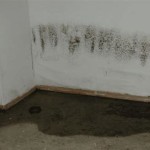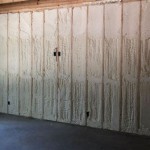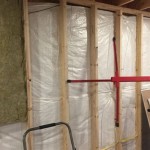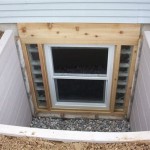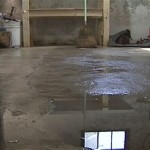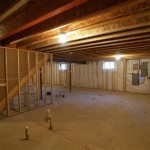How to Fix Water Seeping Up Through Basement Floor
Water seeping up through a basement floor represents a common but potentially serious problem for homeowners. This intrusion, often manifesting as damp spots, puddles, or efflorescence (a white, powdery residue), can indicate underlying issues with the home's foundation, drainage, or waterproofing. Addressing this problem promptly and effectively is crucial to prevent structural damage, mold growth, and compromised indoor air quality. Identifying the source of the moisture and implementing the appropriate remediation strategies are essential steps toward a dry and healthy basement environment.
The appearance of water on the basement floor is often a symptom of hydrostatic pressure. This pressure is created when water accumulates in the soil surrounding the foundation. As the water table rises due to heavy rainfall, snowmelt, or poor drainage, it exerts force against the foundation walls and floor. Concrete, while seemingly solid, is porous. This porosity allows water under pressure to migrate through the material, eventually surfacing inside the basement. Moreover, existing cracks and imperfections in the concrete provide easier pathways for water intrusion.
Before undertaking any repair work, a thorough assessment of the situation is paramount. This assessment should include an examination of the basement floor, walls, and surrounding areas for signs of water damage, such as discoloration, staining, or mold growth. It also involves evaluating the exterior drainage system, including gutters, downspouts, and the slope of the landscape away from the foundation. Understanding the specific characteristics of the soil surrounding the foundation can also provide valuable insights into the potential causes of water seepage.
Identifying the Source of the Water Seepage
Pinpointing the exact source of the water is the first crucial step in determining the appropriate solution. Differentiating between various potential causes can save time and resources in the long run. Several factors can contribute to water seepage, and understanding these distinctions is essential.
One common cause is hydrostatic pressure, as previously mentioned. This pressure forces water through the porous concrete. Another possibility is condensation. In humid conditions, moisture in the air can condense on cool basement floors, mimicking the appearance of water seepage. This is more likely to occur during the warmer months when the temperature difference between the air and the floor is significant. A dehumidifier can often alleviate condensation issues. A third possibility is a plumbing leak. Leaks in water pipes located under or within the basement floor can manifest as water seepage. Signs of a plumbing leak might include a noticeable increase in the water bill or the sound of running water when no fixtures are in use.
To help differentiate between these causes, consider the following: If the seepage occurs primarily after heavy rainfall or snowmelt, hydrostatic pressure is the likely culprit. If the seepage is more prevalent during humid weather and improves when the air conditioning is running or a dehumidifier is in use, condensation is more probable. If the seepage is constant, regardless of weather conditions, and is accompanied by an unexplained increase in water usage, a plumbing leak should be investigated.
Effective Drainage Solutions
Improving drainage around the foundation is often the first and most effective line of defense against water seepage. By diverting water away from the foundation, the hydrostatic pressure is reduced, minimizing the potential for water intrusion. Several drainage solutions can be implemented, either individually or in combination, depending on the specific circumstances.
Properly functioning gutters and downspouts are essential for collecting rainwater from the roof and directing it away from the foundation. Regularly cleaning gutters to remove leaves and debris is crucial to ensure they function effectively. Downspout extensions can be used to extend the discharge point further away from the foundation, preventing water from pooling near the basement walls. The grading of the landscape around the foundation should also slope away from the house. This slope allows surface water to drain away naturally, rather than collecting near the foundation. Adding soil to create a positive slope can be a relatively simple and cost-effective solution.
For more severe drainage problems, a French drain may be necessary. A French drain is a trench filled with gravel that contains a perforated pipe. The trench is typically installed around the perimeter of the foundation, either at the surface or below ground. The perforated pipe collects water from the surrounding soil and directs it to a designated drainage area, such as a storm sewer or a dry well. A properly installed French drain can significantly reduce hydrostatic pressure by intercepting groundwater before it reaches the foundation.
Another option is to install a sump pump. A sump pump is a device that sits in a pit (the sump pit) in the basement floor. When water accumulates in the pit, the sump pump automatically pumps it out and away from the foundation. Sump pumps are particularly useful in areas with high water tables or poor drainage. They can be installed as a preventative measure or as a solution for existing water seepage problems. Regular maintenance of the sump pump is critical to ensure it functions properly. This includes cleaning the pit and checking the pump's operation.
Interior Waterproofing Techniques
While exterior drainage improvements are often the most effective long-term solution, interior waterproofing techniques can provide immediate relief and protect the basement from further water damage. These techniques typically involve applying waterproof coatings or installing interior drainage systems.
Applying a waterproof sealant to the basement floor can help to prevent water from seeping through the concrete. Several types of sealants are available, including epoxy-based sealants, cementitious coatings, and silicate-based sealers. Epoxy-based sealants are durable and resistant to water penetration, but they can be more expensive than other options. Cementitious coatings are applied as a slurry and create a waterproof barrier on the surface of the concrete. Silicate-based sealers penetrate the concrete and react with the calcium hydroxide in the concrete to form a water-resistant gel. Before applying any sealant, the basement floor should be cleaned and dried thoroughly. Any cracks or imperfections should be repaired. It's important to follow the manufacturer's instructions carefully to ensure proper application and performance.
Another interior waterproofing technique involves installing an interior drainage system. This system typically consists of a channel installed along the perimeter of the basement floor, near the wall. The channel collects water that seeps through the walls and floor and directs it to a sump pump. The sump pump then pumps the water out and away from the foundation. Interior drainage systems are often used in conjunction with wall sealants to provide comprehensive protection against water intrusion. The installation of an interior drainage system often requires cutting the concrete floor along the perimeter of the basement, installing the channel, and then patching the concrete. This is a more involved process than simply applying a sealant, but it can be very effective in preventing water seepage.
Waterproofing paints can also be applied to basement walls. These paints are designed to create a waterproof barrier that prevents water from penetrating the walls. While waterproof paints can help to reduce moisture in the basement, they are not a substitute for addressing the underlying causes of water seepage. They are typically used as a supplementary measure in conjunction with other waterproofing techniques.
Addressing cracks in the foundation is another important aspect of interior waterproofing. Cracks can provide pathways for water to enter the basement. Small cracks can often be repaired with epoxy crack fillers. These fillers are injected into the cracks to seal them and prevent water from seeping through. For larger cracks, a more extensive repair may be necessary, such as patching the crack with concrete or using a hydraulic cement.
When selecting interior waterproofing techniques, it's important to consider the specific characteristics of the basement and the nature of the water seepage problem. A professional waterproofing contractor can provide expert advice and recommend the most appropriate solutions.
Preventative measures should also be taken to minimize the risk of future water seepage. These measures include regularly inspecting the foundation for cracks, maintaining the exterior drainage system, and controlling humidity levels in the basement. By taking these steps, homeowners can help to ensure a dry and healthy basement environment.

Water Coming Up From Basement Floor Where Is The Leak How To Stop It

Wet Basement Diy Repair Guide Radonseal

What Causes Leaky Floors In Basements Fixing Leaking Basement

7 Reasons Water Is Seeping Through Your Basement Floor

What Causes Leaky Floors In Basements Fixing Leaking Basement

Water Seeping Through Concrete Slab Diy Guide With Plumbing Tips

How To Stop Water From Coming Up Through The Basement Floor

How To Stop Water From Coming Up The Basement Floor Youtube

Finding And Fixing Basement Leaks How To Waterproof Your

Help My Basement Leaks When It Rains News And Events For Systems Inc
Related Posts
